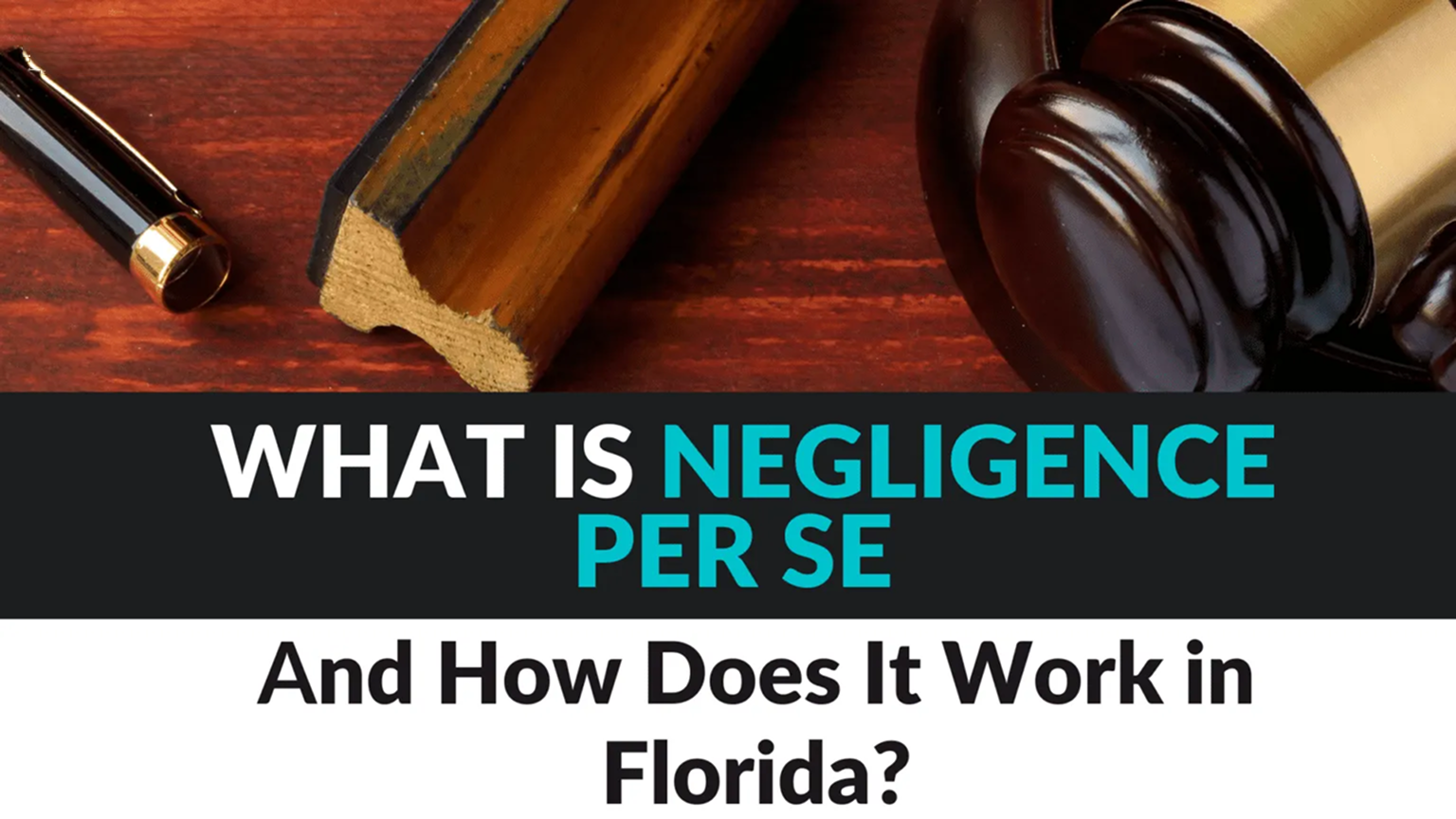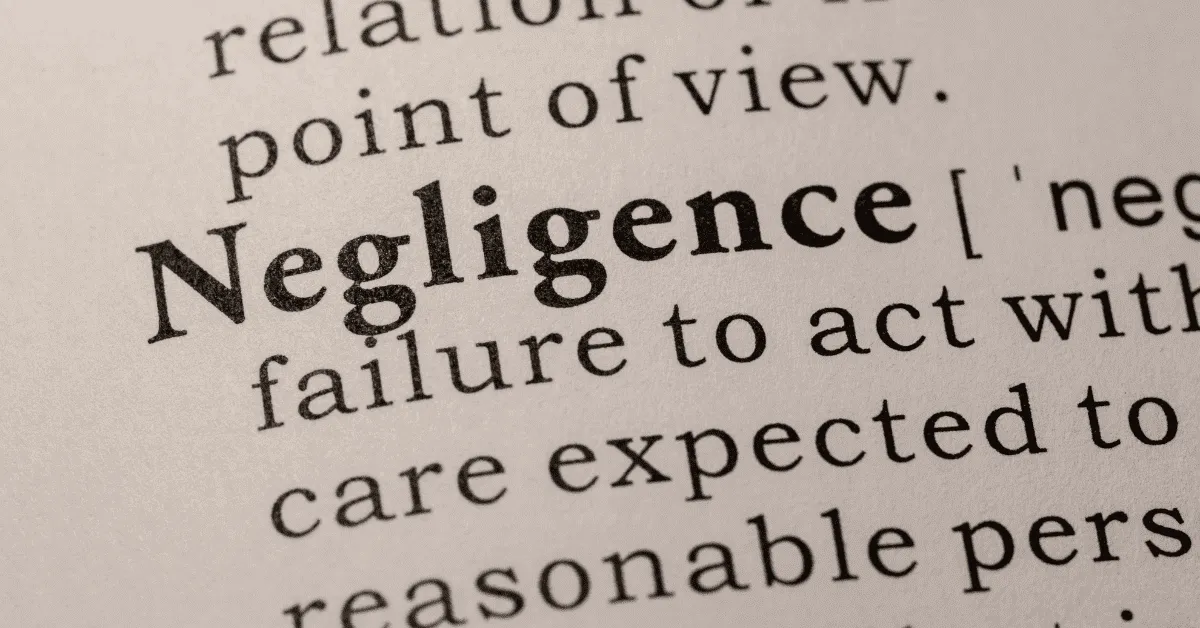What Is Negligence Per Se and How Does It Work in Florida?
The doctrine of negligence is a common aspect of many lawsuits. In most cases, the burden of proof falls on the plaintiff. In other words, the plaintiff must prove the defendant’s negligence and how it resulted in the damages the plaintiff is seeking. This isn’t always easy to do, but it can be in a case of negligence per se in Florida.

Table of contents
- What Is Negligence Per Se?
- Examples of Negligence Per Se
- Negligence Per Se in Florida
- The Difference Between Negligence and Negligence Per Se
- How to Prove Negligence Per Se
- When You Should Contact a Personal Injury Lawyer
- FAQs
What Is Negligence Per Se?
The doctrine of negligence per se is a part of tort law that refers to situations where the defendant clearly broke a regulation or statute. In these cases, the plaintiff can avoid the burden of proof or at least have a much easier time proving it.
Examples of Negligence Per Se
Dog bite cases tend to be very cut and dry in Florida. If dog owners fail to keep their pets secured, especially in a public space, they are almost always found guilty in bite cases. If they can claim that the dog wasn’t on a leash in a public space, which is against the law, it doesn’t leave the defendant much room to counter.
Speeding would be another good example of negligence per se. Since drivers have a public duty to abide by traffic laws, speeding would be considered negligent.
Straightforward cases like these are much easier for plaintiffs to prove, thanks to negligence per se.
Negligence Per Se in Florida
Under Florida law, negligence per se is the “violation of any other statute which establishes a duty to take precautions to protect a particular class of persons from a particular type of injury.”
Claims for negligence per se are common in Florida when a defendant fails to abide by a law or statute that would have prevented damages to another party. It can make the court’s decision on a matter much simpler, avoiding an unnecessarily long trial.
Simply put, if someone was negligent and in direct violation of the law, the burden of proof is significantly reduced for the plaintiff.
The Difference Between Negligence and Negligence Per Se

There are many different forms of negligence. Sometimes, like in the event of a dog bite, it can be very straightforward who is at fault. But it can also be much more complex.
Negligence per se simplifies things tremendously. If the defendant broke a law or statute that led to damages as a form of negligence, the court might find them at fault without further questioning. A typical example is drunk driving.
In an ordinary negligence situation, cases can take much longer as the plaintiff must prove that the defendant did not act in the way a reasonable person would, and their strong negligence caused damages. In your standard negligence lawsuit, the burden of proof is much greater.
How to Prove Negligence Per Se
In a case of negligence per se, it is vital to identify a law or statute that the defendant broke through negligence, which resulted in damages. For example, here is the statute for dog bites in Florida.

In the event of a dog bite injury, it would be pretty simple for a plaintiff to point to this law as a definition of negligence per se on the part of the dog owner. The safety statute leaves very little room for defense when a dog injures somebody.
When You Should Contact a Personal Injury Lawyer
If you or someone you know has suffered an injury due to someone else’s negligence, you should get in touch with a personal injury lawyer as soon as possible.
Getting legal help early on will help you remember the event clearly. Timely legal advice will also help you avoid common mistakes that could jeopardize your case.
Contact D2Law for a free consultation so you can understand your personal injury case. Our personal injury attorneys in the Greater Tampa Area are ready to assist you.
Frequently Asked Questions
How do you prove negligence in Florida?
Does negligence per se establish duty?
Oftentimes, yes. If a law requires the defendant to follow specific regulations and they fail to do so, it can be inferred that a duty of care exists. A common example is not putting a wet floor sign up preceding a slip and fall accident.
Is negligence per se the same as negligence?
Not quite. In a standard lawsuit for negligence, the plaintiff has the burden of proof to show that the defendant was negligent. In a matter of negligence per se, it is clear that the defendant is at fault since they failed to abide by a law or statute governing them.
Is negligence per se a matter of law?
Yes. Negligence per se means a law or statute was broken, which can put the defendant at fault.
Is negligence per se conclusive?
Negligence per se is conclusive as far as proving negligence, but not a liability. If the defendant wasn’t following the laws and statutes that apply to them, which led to damages to another party, the court could avoid further questioning.
NO RECOVERY, NO FEE PROMISE
Schedule A Free Consultation
Latest Posts
CONTACT US
REQUEST A FREE CONSULTATION
D2 Law
Nicole Denmon &
Christian Denmon
Our award-winning trial attorneys have earned a reputation for zealous advocacy on behalf of our clients – both in settlement negotiations and jury trials.
Schedule consultation
with Nicole Denmon and
Christian Denmon
To get the maximum value we start with excellent lawyers! We would not trust our family to just anyone.

